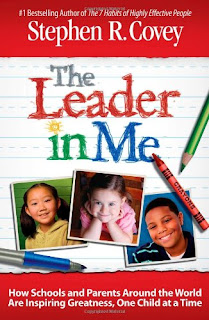1.Value your child’s questions.
“Mommy/Daddy, why is the moon following us?” With this question, a child lets us know she is thinking about how the world works. We can respond in ways that encourage her scientific thinking. Think of how you might respond. Do you think it’s adorable? (It is! But the question also shows your child is thinking!) What can you do if you don’t know the answer? (Don't worry. Your child just might want to share something that intrigues her.) Enjoy discussing the questions your child asks. Encourage her to share her perspective and observations.
2. Explore and find the answers together.
You don’t have to be your child's encyclopedia and quickly try to answer all your child’s questions. Responding with “What do you think?” or “I don’t know but we can find out together” can stimulate more thought and additional questions. Explore and find the answers together.
3. Give children time and space to explore.
Children learn science through trial and error. They need time to experiment, try things out, and think on their own. Wait before jumping in with "correct" answers. Give your child the time and space to explore and discover on her own.
4. Accept that explorations are often messy.
Whether it’s outdoor exploration with mud and sticks or indoors with water, children are likely to get dirty when they explore materials. Dress children in old clothing and tell them it’s ok to get dirty.
5. Learn from mistakes together.
If an experiment goes wrong, take advantage and investigate with your child to see what went wrong. A mistake can lead to all kinds of possibilities and it provides opportunities for you and your child to refine your ideas, understanding, and hypotheses.
6. Invite curiosity.
Science learning begins with curiosity. Observations and questions can create a climate of discovery – key to scientific learning. Children can learn a lot about science even at bath time. Let your child ask her own questions but you can also stimulate curiosity. For instance, when seeing a rubber duck float in the water, invite him to think by saying, “I wonder if the soap will also float?" See what questions she asks and what experiments she tries.
7. Support further exploration.
Intentional adult interactions with children can extend their learning. When the moment is right – maybe when she’s done exploring on her own, offer a suggestion to extend her exploration. Guide your child by asking questions like, “What might happen if we try this?”
Share some things you find while exploring, - a beautiful striped rock, for example. This lets your child know there is always something worthy of our attention and investigation.
8. Encourage children to record their observations.
Writing, drawing, or taking photographs are all ways to record observations - an important scientific skill. Such records allow children to keep track of what they saw, heard, questioned, or discovered. When you notice your child is interested in something (like the moon, leaves changing on the trees, or the growth of a plant) you can suggest ways for them to record what they have observed. “Do you want to draw that?” or “Do you want to take photos?” or “Do you want me to help you write down what you noticed?”
9. Make good use of your electronic devices.
Take pictures of a stunning butterfly, record frog sounds, use a website or app to learn more about a specific phenomenon or creature.
10. Use items you have at home to experiment and explore
You don't need to spend money buying science supplies. Here are some science questions your child can consider using materials you might have at home.
Question #1: How does water move up a plant’s stem?
What You Need: celery, water, food coloring.
Directions: Put a celery stalk or carnation stem in water that has some food coloring in it.
Science principle: Children can see how the colored water travels up the stalk or stem and might notice how a specific part of the celery stalk (called the xylem) draws the water up from the roots just like a straw.
Question #2: How does changing the angle of a block impact the speed of a ball?
What you need: Rubber ball, small toy cars, and long block or plank
Directions: Experiment how fast or slow the ball or car travels down a plank as you adjust its angle. You can do this by changing the height of the plank and testing the speed of the ball.
Science Principle: Children can see that items will roll at different speeds depending on the angle of the block. Try different kinds of items - a tennis ball, a super ball, small cars for example, to explore whether the size, weight, or material impacts the rolling speed.
Question #3: What will sink and what will float?
What you need: Objects you can put in the water (e.g., rubber toys, corks, coins, keys, rocks) and a plastic bucket or large bowl
Directions: Invite your child to put a few objects in the water and see what happens. Then, discuss the concept of “floating” and “sinking”. Ask, "Do you think this one will sink or float? What makes you think that?"
Science principle: Children can explore how size, weight, or other properties of an object determine if it sinks or floats and how quickly it sinks to the bottom or rises to the top.
About the Author: Yi-Chin Lan received her PhD in curriculum and instruction from the University of Texas at Austin. She is currently working as a postdoctoral research fellow at National Taiwan Normal University. Her research interests include parental involvement in children’s science learning, pre-service and in-service teachers’ beliefs about science teaching, out-of-school science learning, etc. She can be reached at lollipop0913@gmail.com










